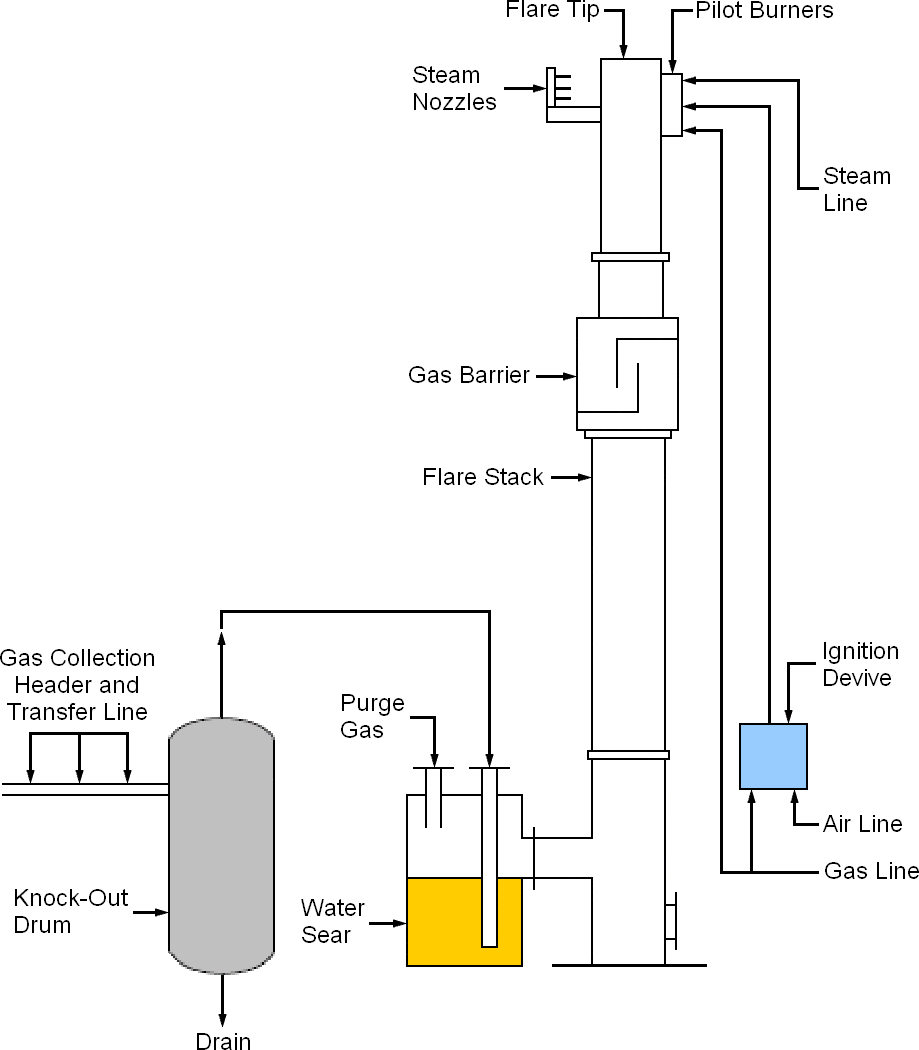 |
Knock Out drum in Flaring system |
A Knock Out drum is a vessel in the flare header designed to remove and accumulate condensed and entrained liquids from the relief gases. Both the horizontal and vertical design is a common consideration for the Knock out drum, which is determined based on the operating parameters as well as other plant conditions. If a large liquid storage capacity is desired and the vapour flow is high, a horizontal drum is often more economical.
Also, the pressure drop across horizontal drums is generally the lowest of all the designs. Vertical knockout drums are typically used if the liquid load is low or limited plot space is available. They are well suited for incorporating into the base of the flare stack.
Knockout drums are a main component in pressure-relief systems in industries. Pressure-relief systems in refineries are used to control vapors and liquids that are released by pressure- relieving devices and blowdowns. A typical closed pressure release and flare system device includes the following..
- relief valves and lines from process units for collection of discharges
- knockout drums that are used to separate vapors or gas and liquids, including seals and/or purge gas for flashback protection
- a flare and igniter system that combusts vapors when discharging directly to the atmosphere is not permitted
Knockout drums and flare systems need to be designed appropriately, because they can cause equipment failures which can result in economic losses for business, environmental contamination, and health and safety risks in case of excessive pressure.

Horizontal-oriented knockout drums are often more economical when large liquid storage is desired and the vapor flow is high. In offshore applications, refineries, and petrochemical industries, knockout drums are designed to effectively remove hydrocarbon liquids from the main flare relief gas to prevent the possibility of liquid carryover and "flaming rain" from the flare tip.
Knockout drums are classified as "two phase" if they separate gas from the total liquid stream and "three phase" if they also separate the liquid stream into its crude oil and water components.
Definition
Gas Blower - Device for blowing air to flare system.
Flare System - A system that safely disposing of waste gases through the use of combustion.
Flare Stack - Is an elevated vertical stack found on oilwells or oil rigs, and in refineries, chemical plants and landfills used for burning off unusable waste gas or flammable gas and liquids released by pressure relief valves during unplanned over-pressuring of plant equipment.
Flare Tips - Structure at top of the flare play the role to keep an optimum burn and control over all flow rates, which results in a cleanercombustion. The design of the tip makes sure that the tip does not come into contacting with the flame making the tips reliable and long lasting.
Ignitions system - Is a system use to ignite the flare of flare systems. Normally this system designed to ignite the flare quickly the first time, maintain combustion and reignite rapidly to prevent industrial hazards and personal injury while protecting the environment.
Knockout Drum - Is a drum installed near the flare base, and serves to recover liquid hydrocarbons, prevent liquid slugs, and remove large liquid particles from the gas streams released from relief system.
Support Structure - Structure which designed to withstand local wind condition for flares. Three types available self-supported, Guy-wire supported and Derrick supported.
Windbreaker - A windbreaker is structure uses to prevent the wind from extinguishing the flames which located at flare tip. It serves also to hide the flames.
Related Post(s)

During flaring, excess gases are combined with steam and/or air, and burnt off in the flare system to produce water vapour and carbon dioxide...